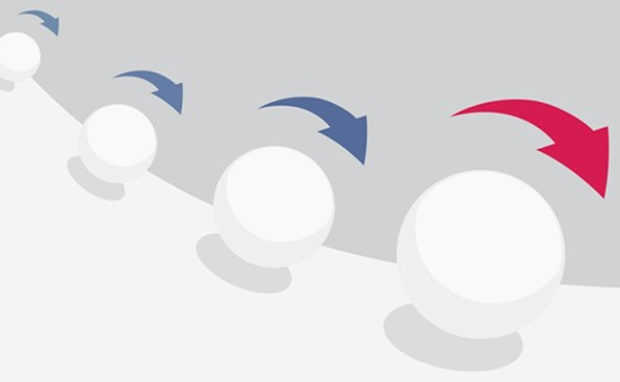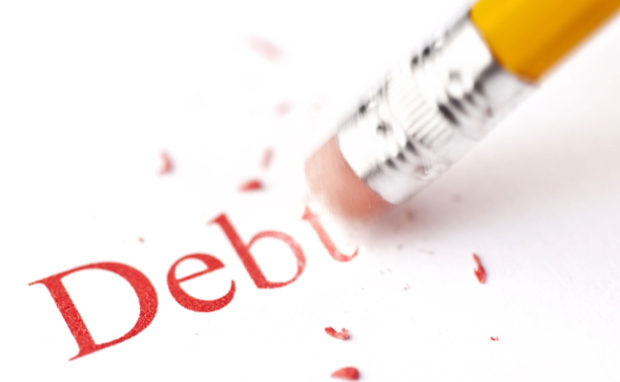Your Debt to Equity Ratio Plays a Major Role for Your Financial Freedom in 2019
It’s not an easy task to pay off debt, but it’s the only way towards financial freedom. And that’s where your debt to equity ratio comes into play. I’m sure you’ve heard a thousand and one different bits of advice. Some say don’t invest while you pay it off.
Another recommends not to merge your debt. Someone else might suggest starting with the highest interest rate. Somebody else says to start with the smallest balance. It might be difficult sifting through all the seemingly contradictory advice. It all boils down to your situation.
There are two methods to pay off debts that are debatable. One is the debt snowball way and the other the debt avalanche way. The two approaches are almost identical in that both require you to make minimum payments on all your debts except a focus debt balance.
By choosing either one of the methods, you will make every payment you can with every dollar you have until the debt of focus gets paid off. Then the next debt in line will then become the new focal debt. As your minimum payments dissipate and you pay off your debts, you’ll end up with more money to send as extra payments for the debt of focus.
Can you see how the snowball analogy came from that explanation? The order in which you intend to pay off your debts is the only difference between the avalanche and snowball way.
Debt Snowball
With the debt snowball approach, the goal is to pay off your debts starting with the smallest balance up to the most substantial balance, no matter the interest rates. Often have a lot of small financial obligations hanging around, which mean much statement arrives each month. The multiple minimum payments to pay can get overwhelming.
The money you borrow from family members, doctor’s bills from a few places, scattered little balances on store credit cards can beat a person down, especially when everywhere you turn it seems like you owe more and more money. Paying off debts from the smallest to the highest balance allows you to see the little balances go away quickly. You could rid yourself of debt entirely each month for the first few months, depending on your situation.
Can you imagine how refreshing that would feel? By seeing progress so rapidly, it could boost your confidence and make you feel you can do it. By the time you pay off your more massive debts, like a hefty credit card balance or car loan, you will have extra money coming in that gives you the ability to make it all the way to financial freedom.
Debt Avalanche
With the debt avalanche approach, you pay your debts in the order from the highest interest rate to the lowest one, despite the balance. Arithmetically, this approach makes the most sense. By tackling financial obligations in this arrangement, you pay less in interest.
You can pay off your debts quicker because you are saving money on interest. The sooner, the better, right? When you look at your debts from this perspective, it doesn’t seem to make sense to pay a debt that’s not charging you interest when there’s a credit card accruing at 18 percent.
The Secret to Getting Out of Debt
The teams divided about the two approaches are each very enthusiastic in their opinions about the best method. Those on the debt avalanche team see the math above everything because for them math rules and they can’t get why everyone doesn’t see it that way. Then, others are cult-like with their following of the system of thought for debt snowball.
The secret is that it hardly matters. Realistically, the best approach to paying off debt is to make the minimum payments required for each one of your financial obligations except for one that’ll be your focus debt. Zero in on that one debt and every extra dollar you get your hand on, put it towards that one debt until it’s out of your life. Which debt you choose doesn’t make very much difference.
Related Articles
What Is Debt Consolidation?
Best Way to Pay off Credit Card Debt: 6 Strategies That Work!
Credit Card Debt in America: Nation’s Leading Cause of Stress
Which Method Do You Choose?
Both ways have their advantages. So how do you decide which approach is the right one for you? Take the following as general advice:
- Deal with one account at a time. Research suggests that sending a little more on a single account has a huge impact. You can stay on the right path with your financial plan, and your debt gets paid off quicker. No matter how you arrange your accounts, pay one down at a time.
- Make calculations. The most motivating choice might not always end up being the rational choice when you remind yourself to take the time to look at the math.
- Don’t quit. It’s hard-working yourself out of debt, even if you pick a method that provides little victories. Just stick with it and stay running the numbers. That way you can see how beneficial your endeavors will be.
- Stay motivated. You want to monitor your motivation level. If you feel it’s deteriorating, you might think about just taking care of a few small balances, to encourage yourself and re-spark the ambition. By doing this over time, you could end up using a combination of both the avalanche and snowball methods.
- If you can, make a sensible choice. For example, if you could save thousands with the avalanche approach, you probably should begin with that way.
The debt avalanche and debt snowball approaches to paying off debts are practically identical because either way, depending on the extent of your liability, you’ll pay off your debt quickly. Getting out of debt entails a great deal more than deciding on which method to follow. It involves lifestyle changes, refinancing debt to reduced rates, and budgeting. Whatever you do, please don’t give up on having a plan; organizing your finances is key to financial success.





